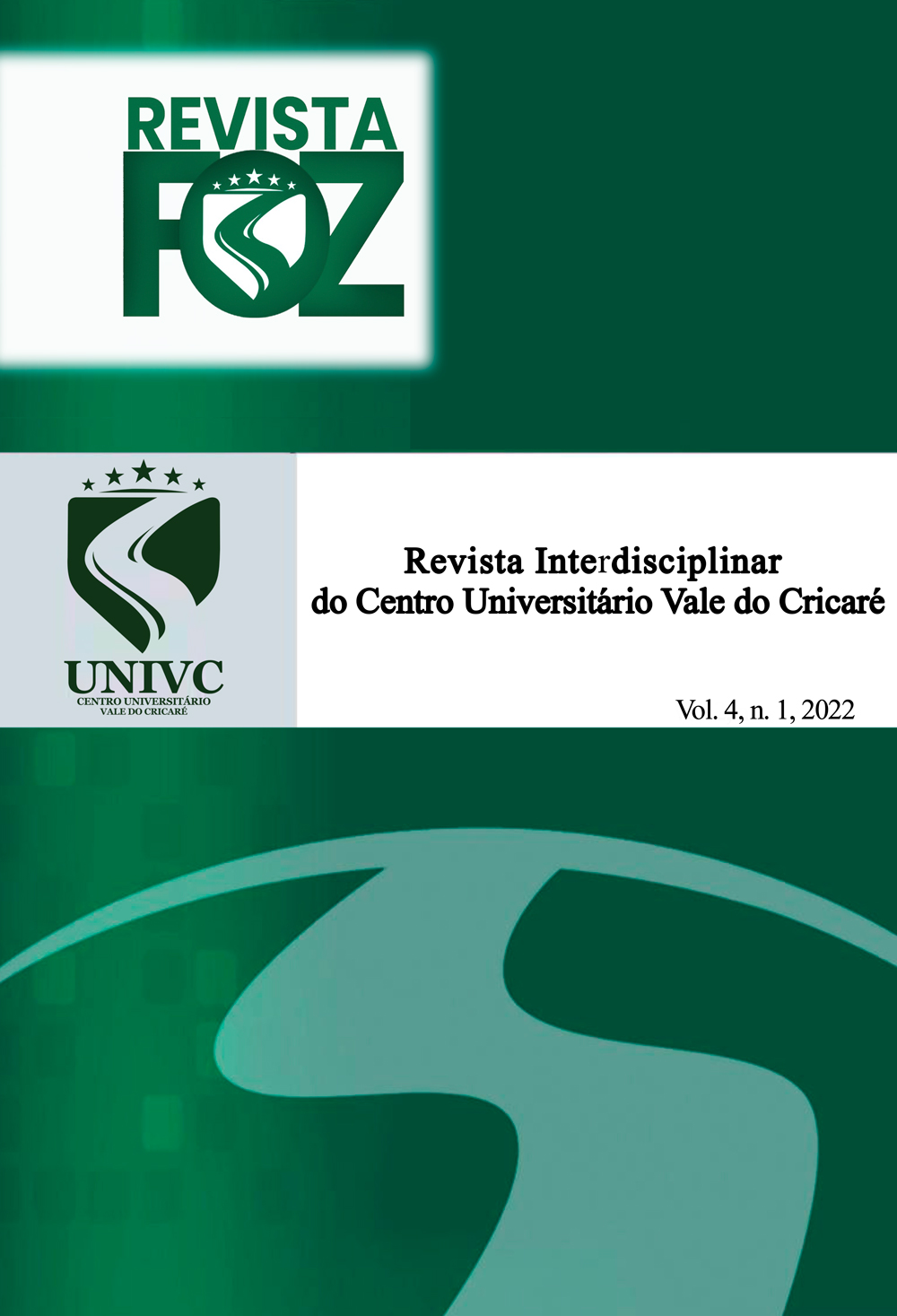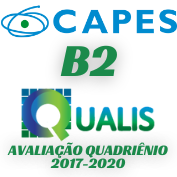Análise de viabilidade técnico-econômica da utilização do biogás/metano de reatores UASB, para geração de energia elétrica
Palavras-chave:
biogás, digestão anaerobia, eletricidade, metanoResumo
Nesse estudo realizou-se a avaliação do potencial de recuperação de biogás em estações de tratamento de esgoto (ETE) doméstico. Visando tornar autossuficiente energeticamente, para isso foi avaliado a facticidade de recuperação de biogás rico em metano para geração de energia elétrica, avaliando o investimento e os custos requisitados para instalação e operação do sistema, considerando três dimensões. Diante disso, foi possível validar tal investimento.
Referências
ABBASI, T.; ABBASI, S. A. Formation and impact of granules in fostering clean energy production and wastewater treatment in upflow anaerobic sludge blanket (UASB) reactors. Renewable and Sustainable Energy Reviews, v. 16, n. 3, p. 1696–1708, 2012.
ACHINAS, S.; ACHINAS, V.; EUVERINK, G. J. W. A Technological Overview of Biogas Production from Biowaste. Engineering, v. 3, n. 3, p. 299–307, jun. 2017.
BILOTTA, P.; ROSS, B. Z. L. Estimate of energy generation and of greenhouse gas emission on biogas recovery from wastewater treatment plant. Engenharia Sanitaria e Ambiental, v. 21, n. 2, p. 275–282, 2016.
BRASIL. Decreto no 7.891, de 23 de janeiro de 2013, 2013.
BRASIL. Resolução no 4.582Brasilia, Distrito Federal, Brasil, 2017.
BRASIL. Leilão no 5/2020 - Processo no 48500.006817/2019-03.Brasil, 2020.
BRASIL, (ASSOCIAÇÃO BRASILEIRA DE NORMAS TÉCNICAS - ABNT). Elaboração de projeltos de hidráulicos-sanitários de estações de tratamento de esgoto sanitário - NBR 12.209-2011Brasil, 2011.
BRASIL, A. N. DE E. E.-A. Resolução Homologatória no 2.530Brasil, 2019.
CAGECE. Estrutura Tarifária. Brasil: [s.n.]. Disponível em: <https://www.cagece.com.br/produtos-e-servicos/precos-e-prazos/estrutura-tarifaria/>.
CAMACHO, C. E. G.; RUGGERI, B. Syntrophic microorganisms interactions in anaerobic digestion (ad): a critical review in the light of increase energy production. Chemical Engineering Transactions, v. 64, p. 391–396, 2018.
CHERNICHARO, C. A. L. Post-Treatment Options for the Anaerobic Treatment of Domestic Wastewater. Reviews in Environmental Science and Bio/Technology, v. 5, n. 1, p. 73–92, fev. 2006.
CHERNICHARO, C. A. L. et al. Anaerobic sewage treatment: state of the art, constraints and challenges. Reviews in Environmental Science and Bio/Technology, v. 14, n. 4, p. 649–679, 21 dez. 2015.
CHERNICHARO, C. A. L. Princípios do Tratamento Biológico de águas residuárias: Reatores Anaerobios. p. 379, 2017.
CHERNICHARO, C. A. DE et al. Contribuição para o aprimoramento de projeto, construção e operação de reatores UASB aplicados ao tratamento de esgoto sanitário - Parte 1: Tópicos de Interesse. Revista DAE, v. 66, n. 214, p. 5–16, 2018.
CREMONEZ, P. A. et al. Two-Stage anaerobic digestion in agroindustrial waste treatment: A review. Journal of Environmental Management, v. 281, n. August 2020, p. 111854, mar. 2021.
GUPTA, P.; SREEKRISHNAN, T. R.; AHAMMAD, S. Z. Role of sludge volume index in anaerobic sludge granulation in a hybrid anaerobic reactor. Chemical Engineering Journal, v. 283, p. 338–350, 2016.
HAI, R. et al. Simultaneous removal of nitrogen and phosphorus from swine wastewater In a sequencing batch biofilm reactor. Chinese Journal of Chemical Engineering, v. 23, n. 1, p. 303–308, 2015.
IPCC, I. P. O. C. C. Guidelines for National Greenhouse Gas Inventories. Prepared by the National Greenhouse Gas Inventories Programme. [s.l.] IGES, Japan, 2009.
LI, J. et al. Performance and granulation in an upflow anaerobic sludge blanket (UASB) reactor treating saline sulfate wastewater. Biodegradation, v. 25, n. 1, p. 127–136, 2014.
LOBATO, L. C. S.; CHERNICHARO, C. A. L.; SOUZA, C. L. Estimates of methane loss and energy recovery potential in anaerobic reactors treating domestic wastewater. Water Science and Technology, v. 66, n. 12, p. 2745–2753, 1 dez. 2012.
LOGANATH, R.; SENOPHIYAH-MARY, J. Critical review on the necessity of bioelectricity generation from slaughterhouse industry waste and wastewater using different anaerobic digestion reactors. Renewable and Sustainable Energy Reviews, v. 134, n. August 2019, p. 110360, 2020.
MA, G.; CHEN, Y.; NDEGWA, P. Association between methane yield and microbiota abundance in the anaerobic digestion process: A meta-regression. Renewable and Sustainable Energy Reviews, v. 135, n. March 2020, p. 110212, 2021.
METCALF & EDDY. Wastwater Engineering: Treatment and Resource Recovery. 4. ed. United States of American: [s.n.].
NOYOLA, A.; MORGAN-SAGASTUME, J. M.; LÓPEZ-HERNÁNDEZ, J. E. Treatment of Biogas Produced in Anaerobic Reactors for Domestic Wastewater: Odor Control and Energy/Resource Recovery. Reviews in Environmental Science and Bio/Technology, v. 5, n. 1, p. 93–114, fev. 2006.
PADMASIRI, S. I. et al. Methanogenic population dynamics and performance of an anaerobic membrane bioreactor (AnMBR) treating swine manure under high shear conditions. Water Research, v. 41, n. 1, p. 134–144, 2007.
PARRA, D. et al. A review on the role, cost and value of hydrogen energy systems for deep decarbonisation. Renewable and Sustainable Energy Reviews, v. 101, n. July 2018, p. 279–294, 2019.
PHAM, T. P. T. et al. Food waste-to-energy conversion technologies: Current status and future directions. Waste Management, v. 38, n. 1, p. 399–408, 2015.
RASOTO, A. et al. Gestão Financeira?: enfoque em Inovação. 1. ed. Curitiba: [s.n.].
REN21. Renewable Energy policy Network for the 12st Century - RENEWABLES 2017 GLOBAL STATUS REPORT. Paris: [s.n.].
RIBEIRO, E. M. et al. Power generation potential in posture aviaries in Brazil in the context of a circular economy. Sustainable Energy Technologies and Assessments, v. 18, p. 153–163, 2016.
RIBEIRO, T. B. et al. Contribuição para o aprimoramento de projeto, construção e operação de reatores UASB aplicados ao tratamento de esgoto sanitário - Parte 2: Tratamento preliminar, bombeamento e distribuição de vazão. Revista DAE, v. 66, n. 214, p. 17–29, 2018.
ROSA, A. P. et al. Assessing the potential of renewable energy sources (biogas and sludge) in a full-scale UASB-based treatment plant. Renewable Energy, v. 124, p. 21–26, ago. 2018.
ROSA, A. P.; LOBATO, L. C. S.; CHERNICHARO, C. A. L. Mathematical model to predict the energy potential of UASB-based sewage treatment plants. Brazilian Journal of Chemical Engineering, v. 37, n. 1, p. 73–87, 18 mar. 2020.
ROSENFELDT, S. Viabilidade técnico-econômica de produção de energia elétrica em ETEs a partir do biogás. 1. ed. Brasilia, Distrito Federal: [s.n.].
SANTOS, I. F. S. DOS; BARROS, R. M.; TIAGO FILHO, G. L. Electricity generation from biogas of anaerobic wastewater treatment plants in Brazil: an assessment of feasibility and potential. Journal of Cleaner Production, v. 126, p. 504–514, jul. 2016.
SILVEIRA, B. Guia técnico de aproveitamento energético de biogás em estações de tratamento de esgoto. 2. ed. Brasilia, Distrito Federal: Ministério das cidades, 2017.
VALENTE, V. B. Análise de viabilidade econômica e escala mínima de uso do biogás de reatores anaeróbios em estação de tratamento de esgoto no Brasil. [s.l.] Universidade Federal do Rio de Janeiro, 2015.
VALENTI, F. et al. Spatial analysis of feedstock supply and logistics to establish regional biogas power generation: A case study in the region of Sicily. Renewable and Sustainable Energy Reviews, v. 97, n. May 2017, p. 50–63, 2018.
VON SPERLING, M.; CHERNICHARO, C. A. . Biological Wastewater Treatment in Warm Climate Regions. Iwa Publishing, p. 856, 2005.
WANDRÉIA NOGUEIRA MOREIRA, Y. et al. Partida de reator uasb em escala real no tratamento de esgoto doméstico em região de clima quente. Revista DAE, v. 68, n. 226, p. 126–146, 18 set. 2020.
Downloads
Publicado
Como Citar
Edição
Seção
Licença

Este trabalho está licenciado sob uma licença Creative Commons Attribution-NoDerivatives 4.0 International License.
Os autores mantêm os direitos autorais e concedem à revista o direito de publicação inicial, com o trabalho simultaneamente licenciado sob a Licença Creative Commons 4.0, Atribuição-Sem Derivações, e pelos direitos de publicação. Os autores podem publicar seus trabalhos on-line em repositórios institucionais / disciplinares ou nos seus próprios sites.











